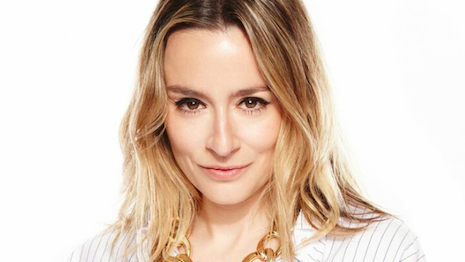By Ana Andjelic
It is a day in February 2016, and the chairman of the Sotheby’s board is angry. Sometime before, as revealed in the Knoedler forgery trial, Sotheby’s paid $10 million for a Frans Hals painting.
The painting was a fake.
Approximately $2 trillion per year of luxury goods are counterfeit. Fine wines, jewelry, antiques, furniture, art and luxury fashion are all targets of forgery, making their sales process costly and lengthy and the connoisseurs wary.
Blockchain will change this.
Buy that
While the Blockchain technology has so far most notably been used in fashion as part of the efforts to make this industry’s supply chain more transparent and sustainable, its more viable uses are most likely yet to come.
The primary purpose of blockchain is to give high-end buyers confidence in their purchases.
Unlike serial numbers, QR codes, UPC codes or bar code systems, which all are easily cloned or copied, blockchain cannot be tampered with.
In the art world scenario, this means that a buyer can access information about the art piece’s authenticity, record their ownership of it, mark the item’s real-time price and insure it.
It also means that we will be able to close the loop between production and consumption.
We are entering the age of the holistic luxury experience, where crafting of an item, its sale and re-sale, and the end of our ownership of it are all part of the same lifecycle.
Luxury is not trading products anymore. It is trading the entire product lifecycles.
Current and future owners of collector wines, furniture and antiques will be able to access information about who had the item before them, how many times it changed hands, and what is the history and the story behind it.
Communication of the art pieces’ story may be equally relevant for art galleries and luxury trade exhibits.
Visitors can educate themselves about a piece of art, furniture, jewelry or a luxury fashion product on their phones, quickly and immediately accessing information on how, where, when and by whom these items were crafted.
Not simply droning on
As drone deliveries and no checkout stores become a reality, blockchain will play a critical role in ensuring self-authentication and security of purchases.
Imagine waiting for a same-day drone delivery of a pricey luxury fashion item.
For the package to be delivered, there needs to be a blockchain-registered chip in the drone that enables it to access your home.
The drone effectively speaks to your door. Once it gets the security clearance, your future Net-A-Porter – or, more likely, Amazon – a luxury purchase will be safely in your hands.
The scenarios are numerous.
Think your private self-driving cars by Uber. Or your very smart home, where every single item communicates with all other ones to create a more seamless, frictionless, effective and emphatic existence for you. Or visiting a store that welcomes you personally. Or a high-end restaurant where the level of service has reached a yet unimaginable level of frictionless-ness and quality.
SECURITY, TRANSPARARENCY and sustainability aside, blockchain heralds an industry where our valuables communicate with us and with each other.
Forget about designer collaborations. The Internet of luxury is where the things are at.
Ana Andjelic is senior vice president and global strategy director at Havas LuxHub, New York. Reach her at [email protected].
{"ct":"wOFDnqrdr6hGypj+QXYGxTaYtDsraE40Ghj0t8TnZphb9dBAoGc4C7XV\/db7HNi819X+zK9FhLoxcrufEovO6WRWswDhPG9hRJN+IKGgKT7lbW9QUBNb2EWLS\/RKQzv6Ly9OvEJgZfjCjcpx3cKIrbYYwHIfL6usHz6dtMxUf8cgb790UrOlYkbkItEoa7BfI4259b009PzHSDtbXvB4VcFjSd\/9XAu3J0Baq0srsQYmrckqq+oXW2yqqE7278fZe22MZFSiXJSjtgi\/QsTsMGDm2JsGFuLkw3+M2t6D5t4upz72LfcD85G5UpeckKqJrHMpsuiQk7YdfbLl3dB4xPok5pa0ywgCUsSt9eRQ8a3ZIKaWnofPYwiiSiuPnk8rgl\/bBLzxM9t2UwdQDoqVrX0uo5R8u1TXeLq9aZd04QiDFK8X6drhXdhngepe5OMKlwIPAJDALrss6kIw9nw\/XP\/HIxINbzInPSB9RwobUkpJm2GHJdd66DFCW7i9LzOIiEoP6MjoaD0ncxM9MRvtKCL5TLPo3Svmc+MY6d9W0+YryOuT\/L9AbkEfvSM0KXu5VCPTcuYgFFbvIbvgH5yHqHXhbI2JNKeXFDZXx43zjmvkhUe0hXSfQG1SHWPP0PUnj97hcYIsn5BJZ6QBZHaTJfAwhJFwEo7DRn+Oj7dBqSFMa6KP1dOJJmfsmcH9G\/YUlD8c2owfMwE+bQQQ1qhlBRbRRhsODOOKGK5dd20X7uUZKRvbMg+ebVEVOm21hciZWxs+C6N9PW7ZW7dTatvxaF7+FlNRbrSe3SYr1Lnm+VSxrXEVG+MHoB76ai9R3+3E4PX\/Y4h0mHwR3orjh5Ti2EHVMJNk57Fyr2Qbutw1Ylg6SMYS0qUZ374DCnG4ghSNTu+wazcCsgcPSvB\/fWbzcK3lFrdIabXwe\/sC+Nqhfp\/G8ib0nbwhVP37H8kgrOYpVL5Q7ixwqOwPczAV2FiQTSsYS5wGEPFhBLoVX1PIxe5C3LAjMS3d0G0Q2rriWTeY5i5SxI7TvpG0wluQcDIdwIPVAhG4dkwDYXnKFdjuo5dPTbnU8bAEK144JaZ77LEMagBcXh98wNEHMzMTLNTSKXMxaOTiFpBtAD36bbxLmXG6QOTyYPsdYnxwxHq4FwHddzU39vwLuwa3HAdv5z5+eF\/XF4saoHd1LrP+LzYge5pepd6AX\/CYpH+deRGYcpSu7WWkig6XrKiRk1Ndao1evxtLc14IlRJosVdLTkew0Ft1tKgh3PKcjqhtiYpX7g1zWTqRwTKiXIKgIqawKGuUizSnIuzgXf39SBVjPFkidaDgp4BPAELK\/aUPVM+Ba3s3BG6zn3\/O0N6sy1I1OZQGEFok7dze4vXEKVmVSEH\/vqhqUxvGsSuIXE7rlscnNKadS2qHLnLl+YGwPmBND0Z1A0mPlYiT7dY89EOc9\/neaxrL2LdqG205f9Oo0ZaJm45qxZFZKDB\/w40kPUxmg0Gyx1UhUn0EgpGfT2C8P9hPQhogwbYnMx+gR9ihe6oxTouyfIWYnG+loU\/uuL6l603G7xu+zGr4E3j66YAiwYYSTR94ClgErQykKnf+ADCjjy6JAvXuer\/xSy2l4trBUIDFHZZMIKqImqbWgaD\/yNDL1OhbgaqYNpWawtz91PKa4AqMpcSzTWkQ7i24aCUAlP9QayoXIbuS7EPPlSyTGUE9lMSu\/AovOqRTx8QFs5dPZu2r53OhEOxbZtt8GvwZWFgZodMxjN6KfrQP0QzQgR9kH9ltnl+a4IOxSJhE2Qc6ZID2ajYf9CcHPCloXvpRn+2BgrXPKasC7HGd50fj5fRLuy7Spp8+4mF9JWmHkqgRpV71x8fSPa2eRl0C96XZ812eV2T0P4CF86twTu+ryD9KZ1jhMc8sfe+wWL2YMCYffD19pBBRc4E4ON555WuqWvOA3LylKFS+kGnw69k51GJLuEVkuUMZmrr6sA6zZWIBCxlwkDl95Ud70RGWpGKRo5EuA1j5GyOxKVvJ9yF\/ZrHGd80aO+\/TQ7wK1ocVDu05eHOVpIW2sply4g0LLRTkAjE0i\/Dw7w9M0fCIN\/71ikRYwH3TTTo3N8ckoX9C5NhVz8qTT\/Qc4LJM4O6L648uiXys+aCpiXF+dp2oupGNc2XY1vOQkqKJDGYfcbiPdJ+HoA33BBxCUVgjbK0hUR06LdKZAlNrn5ciM86Rhk3ipfpoXHIS0kG0o6czzATnWEHGRoTD0qUXWREq6Oj9EJS4gl9YoQrrNzfg1RQ4MjzwVBMEhg227+wYlDI5n3ug39qx7LOJvDXddrU7HDgB0Z7TUcj5mXKXU5W7iCIf0C0FRlRISYIxMLXX\/r1MggPkNhTOUkJIm2YJz3P94D1+Dgp1ArPdvAlMHZClzXarU0EcUbrOPC9akobqhGL1r1PnxERSaYBFxk\/2Hbu7XVCfRef18T4q\/AQinyJ35rtN0ktH8sZ8NKkP\/pswG91feiaOGyVR79kxtQ1JhL712VoaGwEVopUPzwfZSeS\/F1TKCLOmHcwZgOLzh7zdjd1A2UJ6aE+UccP9N3m5gEMQ88EwQwI4ZgrUPOlb7MMsb0fbTxDU4H0YXDMhUVtLOvQqekbly0D4ZwUkJQFFohlkJJF94yg2TTJHmRKKYslXOl0sKVz+eUKLPf8Dj9BhFEXRAzW7gK9kC19B0xiETN0rbWhP\/Ocq4rwgGXc30JirZ5XLeTieFX9snHaRtPjD2Xo\/NMqXTqwRW\/VbeuIn\/2O8AibkLdmWhOrUfMyQfdJZWxU94rUGgmiAGL6APMaSIgKUk21Ldl3gdsrcDDmhmMgVIxbJOGz15EeZGAHz89GAPptl5F4qtrFrS7uIt4FBHumXLGGt6FwrlT1bd1GtOhSDwXD16mK+etS2gkpIXpSbzf7wXbL2BvbkhVa9Kg+AD\/XAj92sYwJAZUp7ZpzQtX5kO7M+ODXUaGEHiGbxrjBMujM0nmzYRxngYew\/+YerEcwk922sJrdPaoyKffIiAwAEqxxvyVsBiYSPeySVOxCJ\/zDIjsxIl02d6MGuVqabcARhAXQ45HiFM82HWfrULJt0UU3yL6Izs0bOoLs0l43sft+nVwQ+UpVLuTGNXALVJQeMAd+QdFARstLggzuWD9tth8VFwfjg5qpPPjXQ\/aK2DayQKcnRA21DY8FVQrZ0ens1r0ZKLNMKK6m4o3PauTbwRWu\/QiP2FvjiHs3Tol2NKwFhvmfJbKkT+ELHGvb7bb0IVgWArAX41GY3yNsWyj0HMgACnkEkh\/8lIV3htgL9Yiap9Q5lURAiX8OQg8W4d9oElQHe1tTpI+ud6DXCjeFtDVSZbDmGjPSZtWivSxBXhxkAEafzwp0ODXF282mCm3sy6AbWQUS7ZWvzbL2nEoW91bAkPvkgO7ZodjDANTgRv8QKPF4cxNrGK++AZ7jcnEj9ihyeNuIPfgK2qeXQLtxqWOewPlRZpwU8HaMp+WV98s2NKhrykWuPJyaILtQWs\/OPy+WJLAj4gn8vEJhq4XHRRoebuDpmjHTrg\/5dmiSBOzRj8NHNqmkt72zWvYWbE\/ei9wGbGMDYsO22qV5kRHIxrfPg3s6YuSkU2ysoMEL+2NhbNWYwIvX3YvcbfRcmh6Cwvxi\/jYukU2o4ZZtBW1b2GZPxP+pYbbyem6GRqYzgy+uooN6ofUSljlL2dA9sH3NnANuTbF27G+g3LGNpI4rn0I+Qq6Er73prtH+68Z9rjfcRTyrrkIbCRXZNNPVhiSOiysTke21z2radV3UmkIlO+YRX1+J3YKRj4A5mqDgQE2d4g3mlnLEeRtptDFZg5hKRwjcXGsJG+pVczqsob2PYwgA83aF95oa7wapiSmFy3pm375\/Za5lxAz6z1CuTMTXn+ABO\/7Rgy7gLMP3SLWHKo1RkHXInFNxbo01bhZbNcxFYCRMiqmY5wY6bcdXXHz9hwYZNoel3Igzi2i6KPJbSPNawgeioAMGF1O5BiC4ft\/Kg+XUDT\/\/89z6qQkSVG87dXOEXAy8W\/z4FmRhR\/iNcBml4U82jp\/94fMYrGrI5zTHEBOTiN3rQqcV1o897wFIv61myHDENRbYDZ7I69YqbplvB8AtanLpD7OxkPq44c3zuwld+pehzMNg59sylEImwz7WxinQfxwP+T636Y0J7oqHWOdBo5Z+Re\/V+CcPoi9eWHY3KA4eCeU8Nu2BmkocdDMktTCmT1KtEzYfiOp37G0+jbJ1tzHRSza1GjeA4SSQ6fWWCejt2BmIe3kjvB0\/5NibwSOINHrgYRnDLvqlKy6E2yjfMVJE7PHbZjwzy6ZIiJmvn5jHohqKAW4njXgj\/HfnTfX98dMQIhHfMNt7yEwnYowlqXe5UWcI9s3mxVKsKMHVXqrKjKfVhQMpjYvumQ9W6lroV+hwcXVgcJeNQ5tOAsZD4hF1ZGD\/2tZRlD\/xFmdLS9JWQdfiUj1R7liulhYX99oL\/NSG0DOjL92D+5PmmgZfYo6\/AE4KRRusXelz87YXprAAoHIeNSlBR6JW+LzjKuBUeZ8gAovBva+qzR8mmtqEGw\/tV0bcsROr79Nkbh2il+bXQeEDQSNXP2WuPszHWnGXBQ5DOIRFEkJ9c+SEaP2iqa9TTNbrA5lMq7QrX+bx0tHvj3YU3AyY4mVr6i3UHpd+hgZdJ2MQ\/4nODExGLf9rq3XJBiK7zFDHQetO1TaP4Hlpw+bYL7FVEo+AWI8QbsKpQVIrWYWXVg6RIDLeovS5mKJGKKCT1aUBIDALY0J\/si1FekQ3jEjdfPFrWa5Fyvon\/uG83\/Bcl99jX9EZ4FNUPaOXe4B1bPjcyIlxQKz7WQ1BfPblRC0wvqVGDH\/OJ3iJ8L49fojZwJ9u\/IiX9TgMbXhT1iwBJxs2LViuTP70cwlyJpxNAwdCuU3VhLAdAcK4XjkrI9hr76w4YGnA31VjCAJ51BYq3hCqxxgfHOks\/g\/DikjoIOg16Yf23xTwPhNo2z1iw8nu25AxRqkp+HJNyJMJsiEkNE+NU6kaaDL9f+aOUUKLAqKjUPSUtLHhwUdAc7ST+jtYs2HJGZLfmsgxPl4p326IKCI7dV\/zMsVJQlJlQzD86tFhHPdgS2bfK\/5cSxFqpbDLT4FswAggD7V+HG1gC7PkLyQoIdx1MsAVOKTRtkL2L4qiNVrJT1y2weYRHu28G8zvKn5qviAkvOnTk1jl\/hulWXfGHwD++DQCot5iJjR0mqQ2DG3VOup30kVWx36aJsSvbPU0rLJhHxxmAUvI\/ywNsxyQXr\/vuOQEfcT61QdaCiqWerHi+9GMl7EhZBfFW","iv":"ca6c15d6a45410a87d4384db69f1822c","s":"6efd660f0beca267"}

 Ana Andjelic is senior vice president and global strategy director at Havas LuxHub
Ana Andjelic is senior vice president and global strategy director at Havas LuxHub